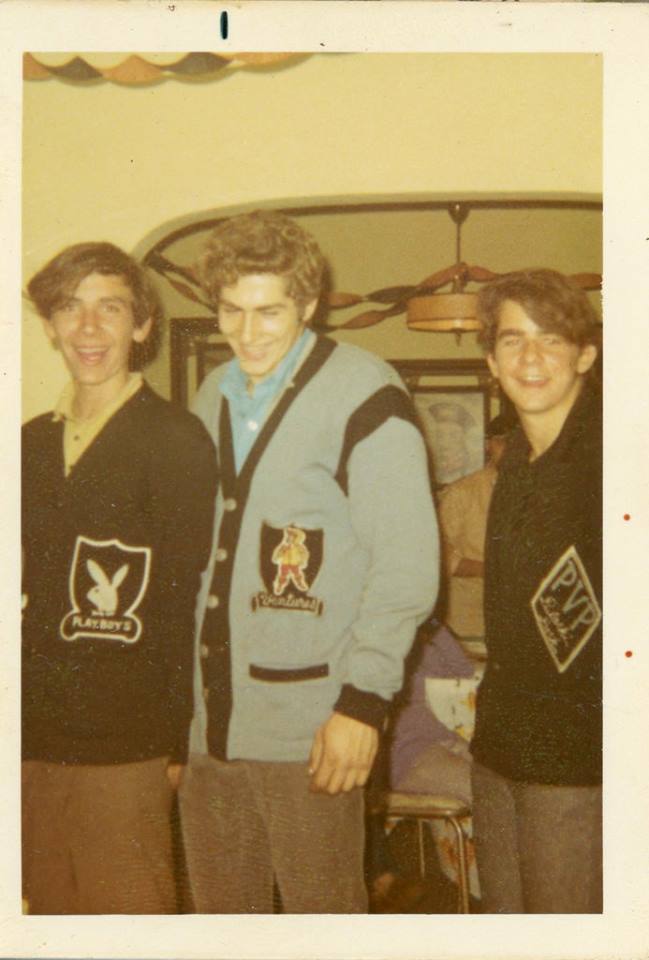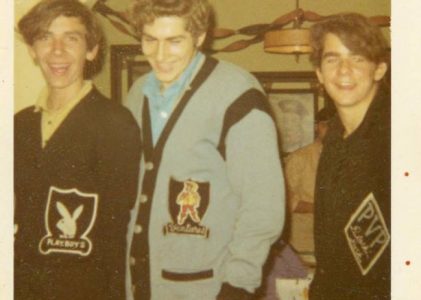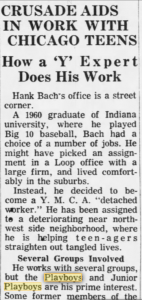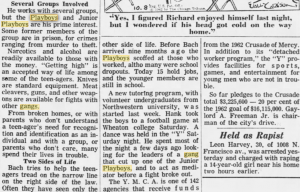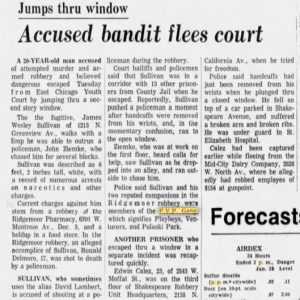| Founded | Founded in 1958 by Guy and Teddy in or near Austin Wicker Park (West Town) Noble Square (West Town) |
|---|---|
| Founding story | Founded in Austin, East Village section of West Town, Wicker Park section of West Town |
| Formerly known as | Naturals 1958-1958; Sons of Satan Slaves 1960-1963; Coachman 1964-1969. |
| Affiliations |
United Five Organization
— 1973
–
1982; |
| Colors | Black and White |
| Primary ethnicities | White |
| Symbols | Playboy Bunny, Cane, Martini Glass, and Cross |
| Status | Extinct |
The first part of this story starts with the Playboys that started as a softball team called “The Naturals.” The Naturals hung out in front of Anderson Elementary School located at 1148 N Honore St, Chicago, IL 60622 (now known as La Salle II Magnet School) in the Wicker Park neighborhood. The boys also hung out in the back of the school in the Anderson Schoolyard. The team also hung out front of Sammy’s Hotdogs that was also located at the same intersection of Division and Honore. The team was formed in 1958 and were just a group of mostly Polish, Irish and German kids trying to play softball and were not started as a gang at first. The kids played softball, Ring-Go-Levio and Hit-In-The Mouth. The Naturals eventually used the team name as their identity and this converted them into a gang in 1958. The Naturals wore black club sweaters with two dice showing a five and a two on the front. The main alpha teammate was a kid named Guy who acted as the team leader. The Naturals were mostly kids from lower income homes that were many times dirt poor.
Later in 1958, the Naturals began hanging out with another group of teens from nearby neighborhoods which created one larger group of teens that hung out together, some were members of the Naturals. These teens started high school at Wells High School in 1958 (Augusta and Ashland in the East Village neighborhood 936 N Ashland Ave, Chicago, IL 60622). At school they quickly got to see that the Italian gangs were running the high school, primarily the Dominos, Lazy Gents, C-Notes and Gaylords. These Italian gangs bullied and harassed the Naturals and their friends because they would get attention from girls at school or would gather a following around them. These Irish, Polish and German kids did not waste much time before they decided they needed to become one big gang to defend themselves against the Italians; they decided on the name “Playboys.” The new sweaters were black with a playboy bunny as an emblem. The female members were named “Playgirls.”
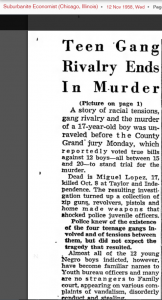
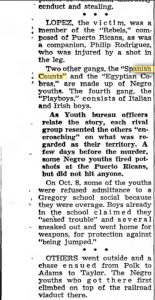
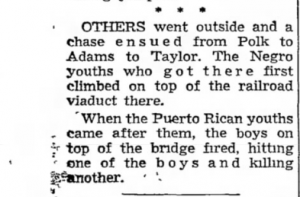
Guy and Teddy became the first leaders of the Playboys as the gang viciously battled against the Italian gangs that tried to prey on them. Guy was in charge for a short time but perhaps didn’t lead the Playboys into the 1960s and Teddy took over full leadership. Guy and Teddy were basically the founders of the Playboys and once they graduated high school in the early 1960s they faded out of the group. Some of the original members got married after high school and left the gang life while other remained as older members.
In about 1962, the older Playboys began hanging out at a bar called Winchester Inn (1935 W. Thomas Street) that used to be located at the intersection of Thomas and Winchester in the East Village neighborhood. These older members spent more time at the bar than at Division and Honore and as new members began joining the Playboys the gang split into Seniors and Junior members. The Senior Playboys hung out at Winchester and Thomas at the bar while Division and Honore was rested away to the Junior Playboys who governed on their own. The Junior Playboys even had their own female members they called “Playmates.” Some of the original Playboys ended up in jail, dead or addicted to drugs in the early 60s but the rest created the new established territory at Winchester and Thomas which would become notorious for years to come.
The Junior Playboys hung out up and down Honore Street between Division and Ellen Street. This is a very narrow one-way road and it made for an easy lookout for the Junior Playboys. Members and others that lived in the area knew if you were to drive down this street you had to turn your bright headlights on as you drove down the street or else your car will get destroyed or you could get shot or beaten. When there was a threat of invasion of rivals Playboys required you to flash your brights as you drive down. These Junior Playboys were much more rough and violent than the original Playboys giving them a reputation for being a force to be reckoned with.
In 1960, another gang called the “Sons of Satan Slaves” was just forming at Walsh Park (1722 N Ashland Ave, Chicago, IL 60622) which is located near Ashland and Cortland in the Wicker Park neighborhood. The Satan’s Slaves also hung out on Marshfield Avenue which borders the park. The Satan’s Slaves had much of the same story as the Playboys. The Sons of Satan Slaves played softball and Ring-O-Levio in the neighborhood until Gaylords started coming around messing with them. Eventually Lazy Gents, Dominos and C-Notes started messing with these kids too driving them to became a street gang. The Sons of Satan Slaves were known for fighting with the Gaylords in the stairwells at Wells High School. In about 1963 the Sons of Satan Slaves changed their name to the “Ventures” and they were a very tough gang that had a reputation for being very violent. After becoming the Ventures their influence spread as many Polish, German and Irish youths wanted in on the Ventures and their turf expanded into the East Village neighborhood where much of the Junior Ventures landed. The Ventures assembled a large chunk of turf in the area of Division Street on the north, Ashland Avenue on the east, Chicago Avenue on the south and Damen Avenue on the west. The Ventures had much of the same story as the Playboys; they attended the same high school and had issues with the same Italian gangs and fought over girls etc…
The next part of the story is with “Pulaski Park.” The Pulaski Park started in the year 1960 right at the park they were named after. Pulaski Park is located at 1419 W Blackhawk St, Chicago, IL 60622 in the Wicker Park neighborhood. The Pulaski Park gang became quite popular in this area and grew into pretty strong numbers mainly because this park was large in size and many people came to hang out in the park which exposed the Pulaski Park gang to many youth coming in and out of the park and soon neighborhood kids wanted to join the group of greasers hanging out in the park. Right near this park was St. Stanislaus Kostka Church that had a school at Noble Street and Potomac Avenue. The church is at Evergreen Avenue and Ada Street. This parish is right next to the park and would host a carnival every year which invited many youths to Pulaski Park turf. Rival gangs came to attend the carnival in search of girls and fun times and this made Pulaski Park angry and big gang brawls would ensue on these grounds. Just like the Playboys and the Ventures Pulaski Park were Irish, Polish and German teens that fought with the same Italian gangs like Dominos, C-Notes, Gaylords and Lazy Gents.
The final part of the founding story was the creation of the “Coachmen” that formed in the year 1964 at the intersection of Wood Street and Thomas Street in the East Village neighborhood. Once again this was a group of Irish, Polish and German youths that came together to fight against the Italian gangs like C-Notes, Gaylord, Dominos and Lazy gents. The Coachman had issues with drug use as many members got into it pretty bad which caused them to already have issues with keeping their organization solid. The Coachmen hung out with a nearby gang of Polish, Irish and German kids called “The 13th District” that had turf at Walton Street and Wood Street in the East Village neighborhood. 13th District got their unique name because the 13th District Chicago Police department is located right at that intersection. Both gangs had a lot in common and even found more common ground in 1964 when Puerto Rican gangs started popping up in the area like Latin Kings, Warlords, Spanish Lords and various others.
In the year 1964, Playboys, Ventures, Pulaski Park, Coachmen and 13th District were now facing a new enemy, the Puerto Rican gangs. Puerto Rican people began migrating the West Town in the late 1950s but tended to assimilate among the German, Irish, Polish, Italian and Ukrainian youths. By the summer of 1964 there was a major boom in Puerto Rican gangs and much of West Town was not happy.
In the year 1964, the popularity of Puerto Rican gangs continued to swell and became a threat to Playboys, Ventures and Pulaski Park, therefore these three gangs created a unity of their own called “Playboys, Ventures and Pulaski Park,” also know as P.V.Ps.
The best way to describe the P.V.P unity is a “all for one” mentality. P.V.P was a strong unity and became legendary and still talked about heavily today. Although Playboys, Ventures and Pulaski Park were still three different gangs that operated as one organization for the most part and even adopted the Playboy’s colors and symbols.
Gaylords, C-Notes and Lazy Gents territory was Chicago Avenue on the north, Ogden Avenue on the east, Grand Avenue on the south and Leavitt Street on the west. P.V.P turf was Armitage Avenue on the north, the Kennedy Expressway on the east running down to Noble Street, Chicago Avenue on the south and Damen Avenue on the west.
After the P.V.P was put together, the Junior Playboys graduated into Senior Playboys while much of the original Senior Playboys had retired. The new Senior Playboys were wilder than the originals and really made the Playboys more well known.
In the year 1965, the federal government started a program where they paid certain gang members to organize positive activities for the gang. The Playboys were able to organize softball, flag football and field trips. Each gang had junior and senior counselors. The Senior counselors would resolve differences with rival gangs and take lingering issues to the boxing ring at the local Y.M.C.A where they could slug it out. This program effectively cut back on street violence and gang wars but it ended less than a year later and the gangs just became worse afterward.
In the mid-1960s a new wave of young Playboys joined that were given the title of “Pee Wee Playboys” because they were very young and in Junior High. This group proved to be some of the most ruthless members in all the P.V.Ps especially by the later part of the decade when they started high school and became Junior Playboys, while the Junior Playboys before them became Senior Playboys.
The late 1960s was a tough time as Senior members of P.V.P ended up being killed in the streets, ended up in prison, got drafted to fight in the Vietnam war (or volunteered) or started families and moved away. Even Junior Playboys were succumbing to some of these circumstances and P.V.P numbers started to decline in between 1967 and 1969. By 1969 the Playboys began to vanish from their original section along Division Street in Wicker Park.
Neighborhoods like Wicker Park, Logan Square, East Village, East Humboldt Park and West Humboldt Park began to decline and became drug infested areas as poverty set in deep and more impoverished Puerto Ricans moved in. Many white families found these communities to be undesirable and began moving along with the “white flight” wave leaving the white greaser gangs to decline in numbers, the P.V.P.s suffered from this quite a bit. Now the white youths were becoming outnumbered and many were being bullied by Puerto Rican gangs as they tried to walk across the neighborhood, get on school buses or just go to the store. White gangs were also heavily outnumbered as more Puerto Rican gangs were creating unities and teaming up against white gangs. As more Puerto Rican people moved into these neighborhoods it also brought scores of prospects for Puerto Rican gangs to recruit from. In 1969, the white gangs decided their wars against each other were not for the good of any of their organizations and a truce was made. The war between the Italians against the Polish, Irish and German youths stopped as they now realized who the real common enemy was. P.V.Ps, Gaylords, Taylor Jousters, Lazy Gents, C-Notes, Chi-West all became allies in West Town. Although this alliance was not as solid as P.V.P it was still a total ceasefire between their groups that would sometimes involve backing each other up in street fights.
The new alliance breathed life back into all the white gangs as recruitment sky rocketed right away in 1969. The P.V.P.s had much success between the years of 1969 and 1970. There was much demand for the need to be a part of white gangs as Puerto Rican migration intensified in the northern part of Chicago and white youths were bullied severely.
In the year 1971 the Playboys moved into Venture neighborhood in Wicker Park north of North Avenue as Division Street was closed for good.
Part of the reason for the spread of Ventures and Playboys was the rise of the new Junior Playboys that were once the Pee Wee Playboys of the mid-60s. These Junior Playboys were known for gangbanging in extreme fashions by shooting guns at their enemies instead of the traditional knives, bats, chains and car antennas. The Junior Playboys also started hanging out at Winchester and Thomas in the early 1970s and by 1972 they had completely taken over that turf. The first and second wave of Senior Playboys was more or less disappearing on the streets while these newer Playboys were becoming a big deal. The Junior Playboys also had a new leader, high schooler Pete “Kong” Smolak was in charge of the Junior Playboys in the very early 1970s.
Pete Smolak was a legend on the streets and was very well known among Pee Wee and Junior members of the P.V.P. Tragedy fell upon the Playboys when Kong was killed by the Haddon Boys on July 2nd 1971. During an altercation with the Haddon Boys Smolak was shot and instead of going to the hospital he went to gather his friends and plotted an attack against the Haddon Boys that involved ambushing them; however, the plan failed when they arrived and discovered the Haddon Boys were surprisingly well armed. A major gun battle ensued between the two gangs and there really was no winner which was surprising because the Haddon Boys heavily outnumbered the Playboys. Despite the victory of holding their own Pete “Kong” Smolak was shot more times and died that day.
The Playboys suffered some decline after Smolak’s death but were still in a cease fire with other white gangs due to the new W.P.O. (White Power Organization) alliance that more officially kept the cease fire in tact between white gangs.
In 1971 after Kong’s death the P.V.Ps embarked upon an expansion campaign as they started out just hanging out in new neighborhoods then established territory elsewhere. Playboys had a very hard time hanging out in their neighborhood after Kong’s death because the shootout that caused his death caused a lot of police attention. PVP expanded in a major parts of Bucktown, Wicker Park, Noble Square and East Village. Pulaski Park stayed in their Noble Square area but Playboys and Ventures were much more adventurous as they traveled to Austin and Belmont-Cragin neighborhoods and even had some hangouts in West Humboldt Park, Logan Square and Hermosa. I do not know when the Hermosa, West Humboldt Park or Logan Square sections began but I believe it was 1971 which was the same year Playboys and Ventures arrived in Belmont-Cragin at Diversey and Cicero and Wrightwood and Laramie. In the Belmont-Cragin area Gaylords had already arrived and this established a friendship between the two groups.
The next settlement story I am familiar with the settlement of the Playboys and Ventures in the Austin area in 1971. Playboys and Ventures started hanging at Pine and Augusta along with the Austin Bowling alley at Division and Central. The Ventures settled around Crystal and Pine while Playboys settled at Division and Waller. Since 1967 the white middle class area of Austin began being settled by more and more black families which was not the overall issue for groups of white youths they were just more concerned about undesirables of any race but gangs like Conservative Vice Lords, Cicero Vice Lords, Central Vice Lords, Imperial Vice Lords, Four Corner Hustlers and Insane Vice Lords were more or less undesirables for the white youths of Austin.
In this same year of 1971 the Rice Boys were started at Rice and Pine by Bob “Maniac” Walden. Bob was a legend on these streets and so were the Rice Boys. Rice Boys, Playboys and Ventures were all about white power in their gang cards and many of their actions but in reality there were black members of the Rice Boys and Playboys in this neighborhood, again it was all about outsiders that threatened the harmony of the neighborhood. It just so happened most of the undesirables were black and this caused these groups to try to steer black families away from moving here. Rice Boys would even use methods of terror by burning crosses on black family’s lawns and taking pictures of it. Within no time the Rice Boys cliqued up with Playboys and Ventures to form the P.V.R or Playboys Ventures and Rice Boys. Bob Walden was the long time President of the Rice Boys. Bob was the most feared member of the Rice Boys to the point where enemies tried to steer clear of him. One of the only gangs that really stood up to the Rice Boys was the Ghetto Brothers Organization that arrived in Austin one year after Bob was put in prison.
In 1971, Taylor Jousters first arrived in the Wicker Park neighborhood as they settled at North Ave and Damen. Jousters then recruited white youths in the area that mainly had a white power stance, hence, why Jousters joined the WPO agreement. Jousters allied with the Playboys and Ventures to create the P.V.J or Playboys Ventures and Jousters. This brought them together at Wrightwood and Avers in the Logan Square community.
In West Humboldt Park Playboys and Gaylords came together at North Ave and Kedvale to create the P.V.G or Playboys Ventures and Gaylords.
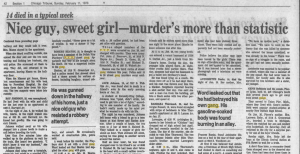

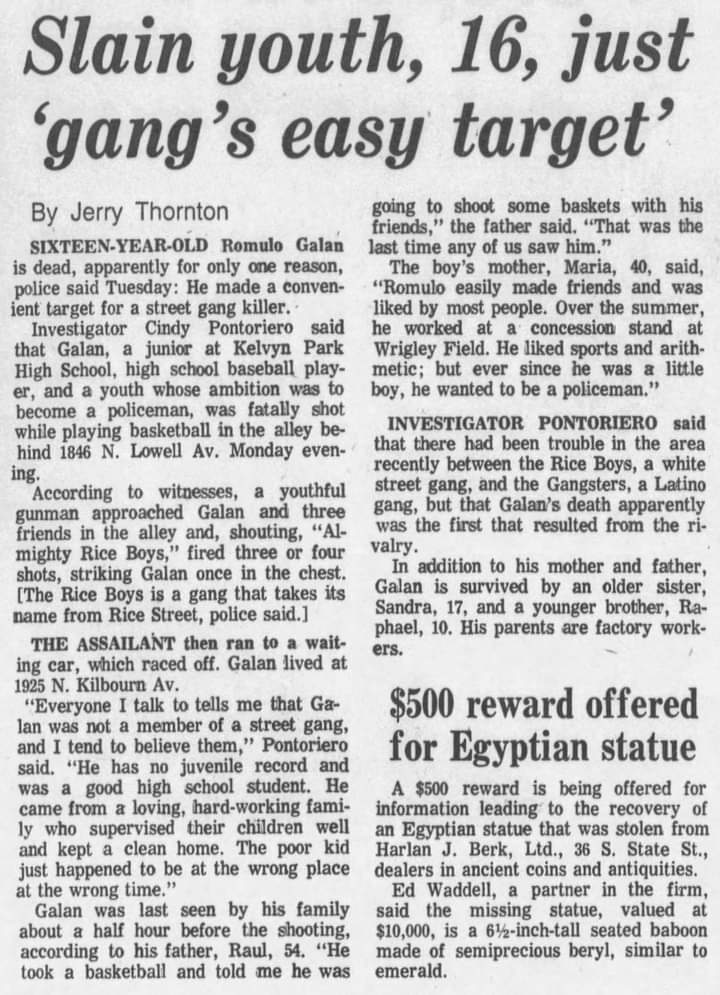
In the mid-1970s the ruthless group of Junior Playboys became Senior Playboys and the P.V.P. as a whole was experiencing great success as their numbers grew but this would soon be short lived as many key Senior Playboys began to see jail time by 1975. The WPO broke up after Gaylords went to war with Simon City Royals and Insane Popes. Now this meant P.V.P, P.V.R. and P.V.J all had to war against them too. This war mainly effected the Belmont-Cragin P.V.R.s. After these events the P.V.Ps left the Pulaski Park, East Village, Wicker Park and West Humboldt Park communites especially since white flight was taking off and Puerto Rican migration was intensifying.
In the year 1977, the Rice Boys began having intense conflict with the Imperial Gangsters in the Hermosa community. Bob Walden was convicted of murder in that year after he shot an Imperial Gangster during this war. The incarceration had an impact on the Rice Boys existence in Austin, however, the group would still be heavily active in the late 70s.
Between the years 1975-1979 the P.V.Ps were only well organized in Austin and Belmont-Cragin. In Austin they were mainly just Rice Boys as Playboys and Ventures had mostly left this community in the later 70s. This is when P.V.Ps first began to put their focus on Belmont-Cragin.
In the late 1970s, Gaylords, Taylor Jousters and P.V.R. teamed up to fight against Hispanic gangs for control of Hanson Park and Cragin Park. The Jousters and Playboys especially fought the hardest and managed to take over these parks. The Jousters took Hanson Park while the Playboys took over Cragin Park. P.V.R. was developing a strong following in the late 70s as Hispanic migration dramatically increased in Belmont-Cragin and black migration turned Austin majority black. This caused many more frustrated white youths to desire membership into P.V.R. Austin especially was a neighborhood that needed membership and P.V.R. headquarters was established at Division and Waller (mainly controlled by Rice Boys), while a smaller headquarters was located in Octavia Park. The new P.V.P. headquarters was set up at Austin Bowl at Central Avenue and Division in Austin. The fact that PVR and PVP both had their main headquarters in Austin showed how strong the struggle was against black gangs and GBOs.
In the year 1979, PVRs made their way into their one and only suburban outpost in the suburb of Norridge in Octavia Park which became a small headquarters.
In the early 1980s, P.V.P., P.V.R. and P.V.J. all went through a massive decline due to white flight and more incarcerations. Austin had become over 90% black and this meant black gangs like the Vice Lords completely dominated the area. Rice Boys and Playboys continued to make a last stand in the early 80s in this neighborhood but the first to fold were the Ventures as Crystal and Long fell. Austin Bowl headquarters was shut down as Thomas and Pine, Crystal and Pine, Rice and Pine, Thomas and Menard and Chicago Avenue and Central Avenue all fell under Vice Lord control as white youths became a scarcity by 1987. The headquarters for P.V.R. at Division and Waller closed down and there were no more headquarters left for the unity. In the year 1980, Pulaski Park and the Ventures completely shut down any city-wide operations.
In the year 1982, the U.F.O alliance was dissolved as Gaylords, Taylor Jousters, Freaks and Playboys all went to war with C-Notes. This loss of the alliance hurt Playboy’s operations further as now they had a new war to engage in.
In the year 1984, the Playboys got a second wind as their recruitment drive dramatically picked up. Wrightwood and Laramie now flourished as now there was a lot of Playboys hanging out in the park and viciously fighting Spanish Cobra invaders. The Playboys successfully beat the Cobras back and the Cobras gave up trying to take over that park.
In the mid-80s the Playboys and Rice Boys fought their last stand in Austin but it was a losing battle against the many black gang members all around them. These Playboys and Rice Boys were among the last white families to live in central Austin and they finally packed up and left the area in 1987.
By the late 1980s, you could only find Playboys in one little section of the city at Wrightwood and Laramie in Cragin Park, even there they were starting to experience their first decline in numbers. Octavia Park was closed down, hence, closing their only suburban turf.
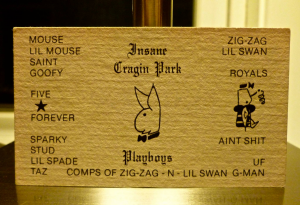
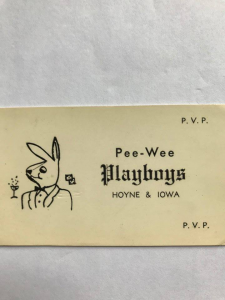
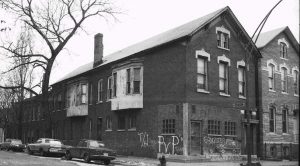
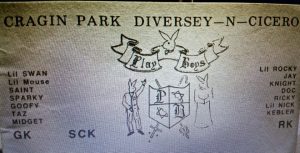

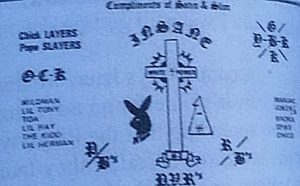
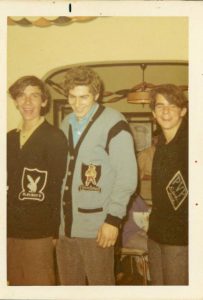
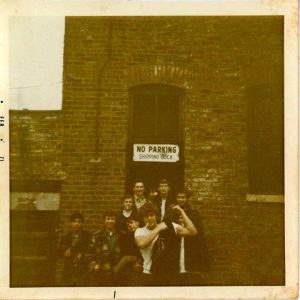
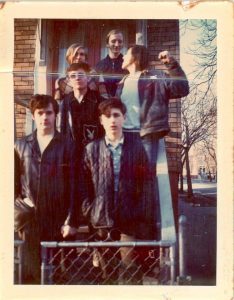

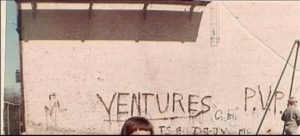

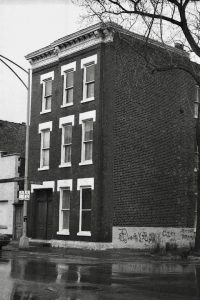


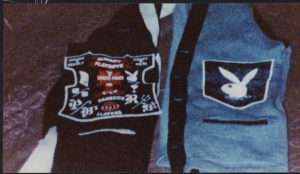


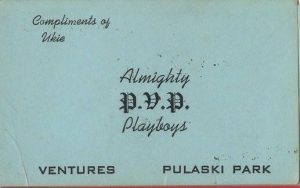


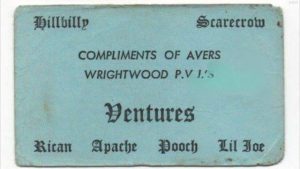
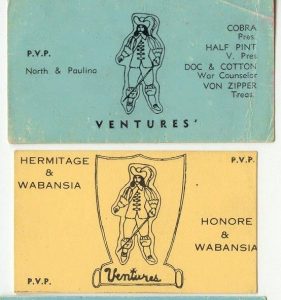
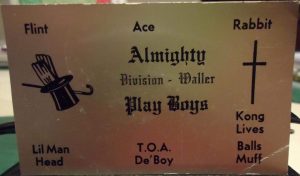

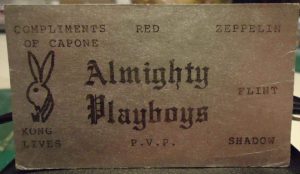

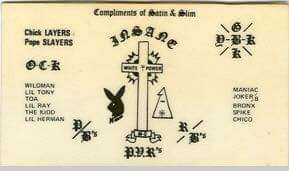

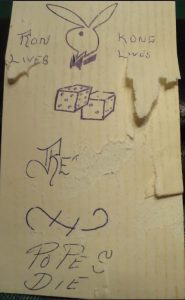
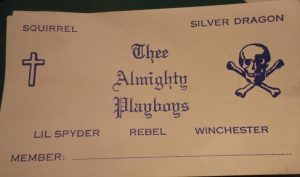
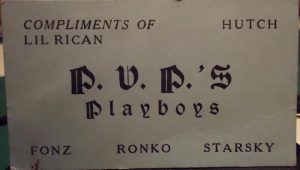


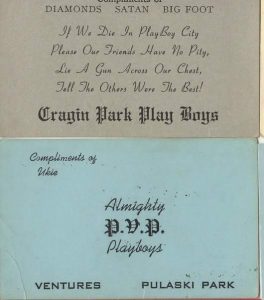
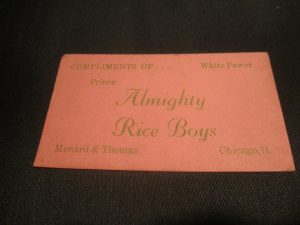

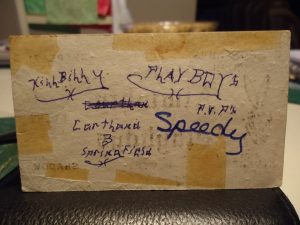
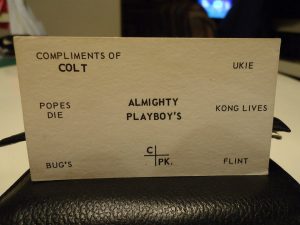

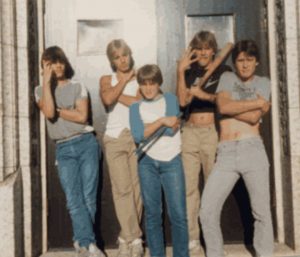
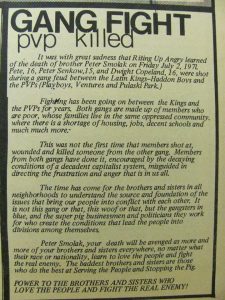

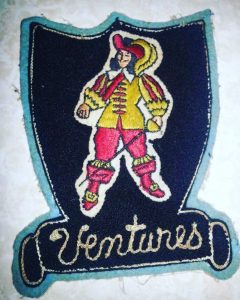
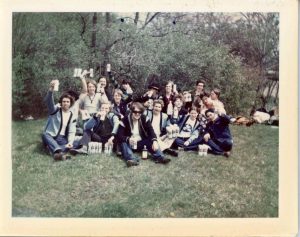
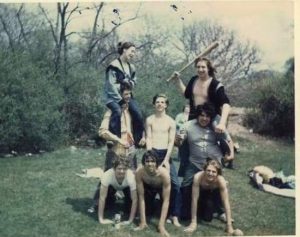

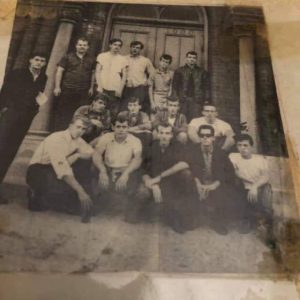
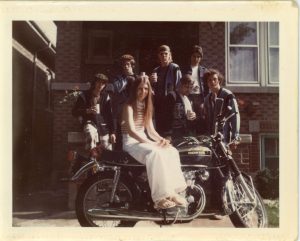

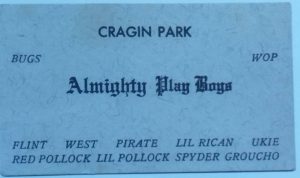
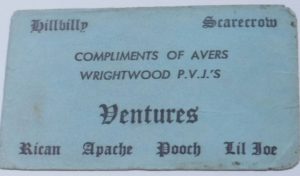
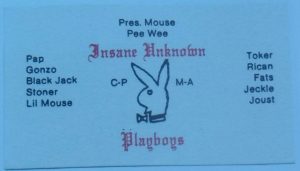
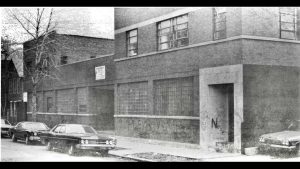
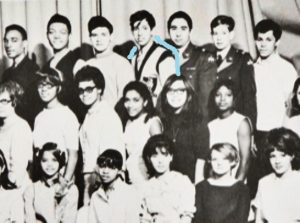



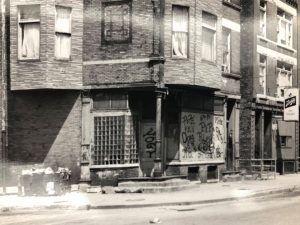
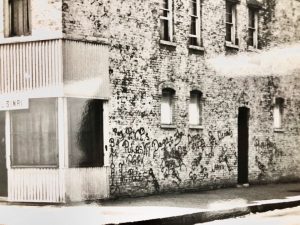
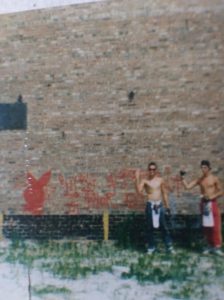
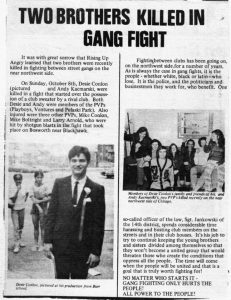
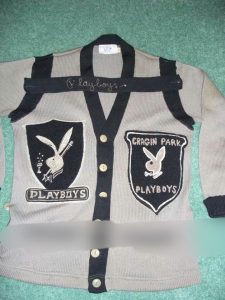
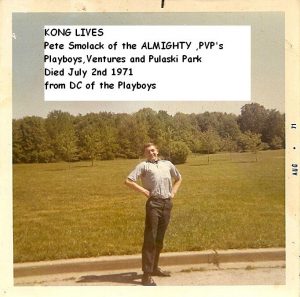
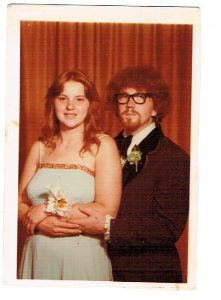
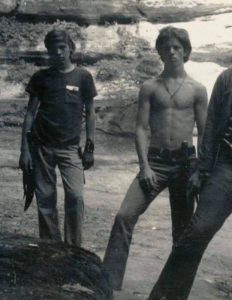
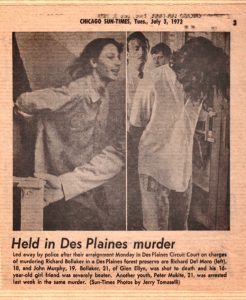

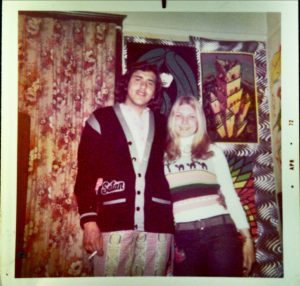
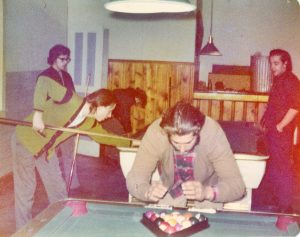
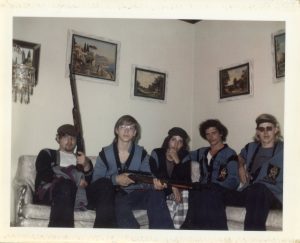

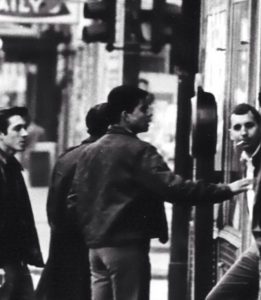
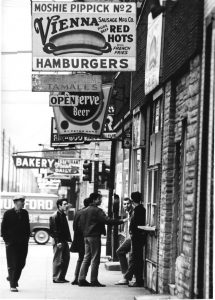
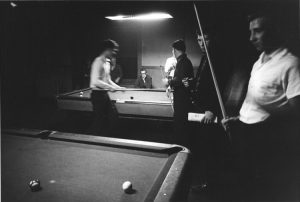
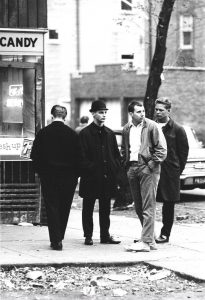
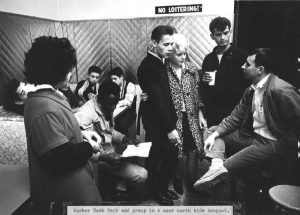
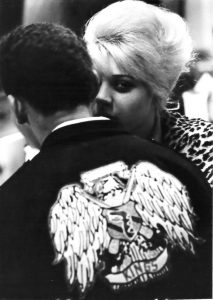
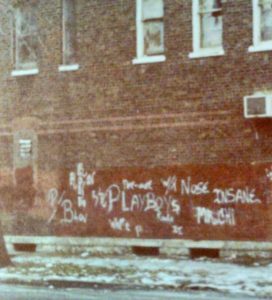
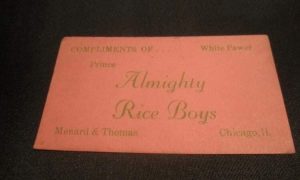
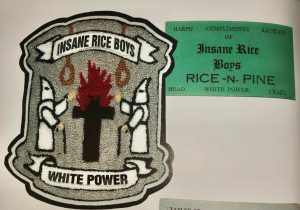
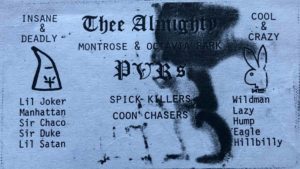
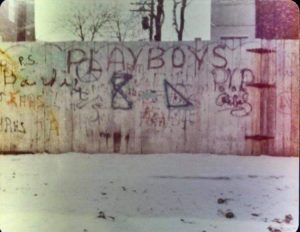

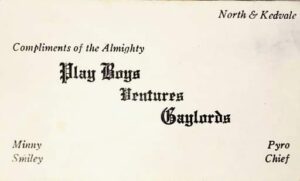
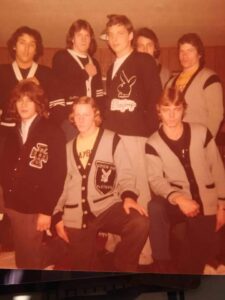

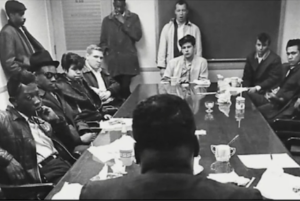
In the year 1990, Cragin Park came to an end as the last Playboys retired or moved away. This brought an end to a major legacy that is not forgotten not only by those that had membership but also by those that fought against the P.V.P., P.V.R. and P.V.J. and perhaps suffered greatly going against them.
Please send in pictures of P.V.P, P.V.R. and P.V.J or any organization within this alliance. Looking for old school pictures of members and/or graffiti from the past.
Questions:
- Who was the founder of Pulaski Park and what happened to him?
- Who was the founder of the Ventures and what happened to him?
- What was the time line of Playboy leaders before and after Kong?
Known sections of the Playboys Ventures and Pulaski Park from the past
Austin neighborhood Established 1971-mid-1980s
Sections of Austin
Division & Waller Established 1971 as Playboys (headquarters PVR)
Menard & Thomas Established as Rice Boys (PVR)
Central Ave & Division (Austin Bowl headquarters, PVP)
Crystal to Rice, Long to Pine Established as Rice Boys and/or Ventures 1971 (PVR)
Chicago Ave & Central Ave (PVR)
Belmont – Cragin neighborhood Established 1971-1990
Sections of Belmont – Cragin
Diversey & Cicero Established 1971 as Playboys
Wrightwood & Laramie Established 1971-1990 as Playboys (Cragin Park)
East Village neighborhood Established 1962-1975
Sections of East Village
Thomas & Winchester Established as Playboys 1962-1975 (PVP)
Hermitage & Pearson Established as Playboys (PVP)
Division to Chicago Ave, Damen to Ashland Established as Ventures (PVP)
Wood & Thomas Established as Coachmen 1964-1975 (PVP)
Honore & Thomas Established as Ventures (PVP)
Walton & Wood Established as 13th District 1964-1975 (PVP)
Sections of Hermosa
Cortland & Springfield Established as Playboys (PVP) 70s
Sections of Logan Square
Wrightwood & Avers Established as Ventures (P.V.J) 70s
Noble Square neighborhood Established as Pulaski Park 1960-1975
Sections of Noble Square
Blackhawk & Bosworth Established as Pulaski Park Established 1960-1975 (PVP)
Cleaver & Potomac (Pulaski Park) Established as Pulaski Park 1960-1975 (PVP)
Ukrainian Village neighborhood
Sections of Ukrainian Village
Iowa & Hoyne Established as Playboys (PVP)
Winchester & Iowa Established as Ventures (PVP)
West Humboldt Park neighborhood Established 1971-1975
Sections of West Humboldt Park
North Ave & Kedvale (PVG) Established 1971-1975
Wicker Park neighborhood Established as Playboys 1958-1975
Sections of Wicker Park
Wabansia to North Ave, Ashland to Honore (Walsh Park) Established as Ventures 1960-1975, as Playboys 1971-1975 (PVP)
Division from Honore to Ellen Established 1958 as Playboys (PVP)
PVP overall section (Wicker Park, Noble Square, East Village, Bucktown)
Armitage to Chicago Ave, Damen to Noble (PVP)
Suburbs
Norridge Montrose & Octavia Established 1979 (Octavia Park, PVR)
